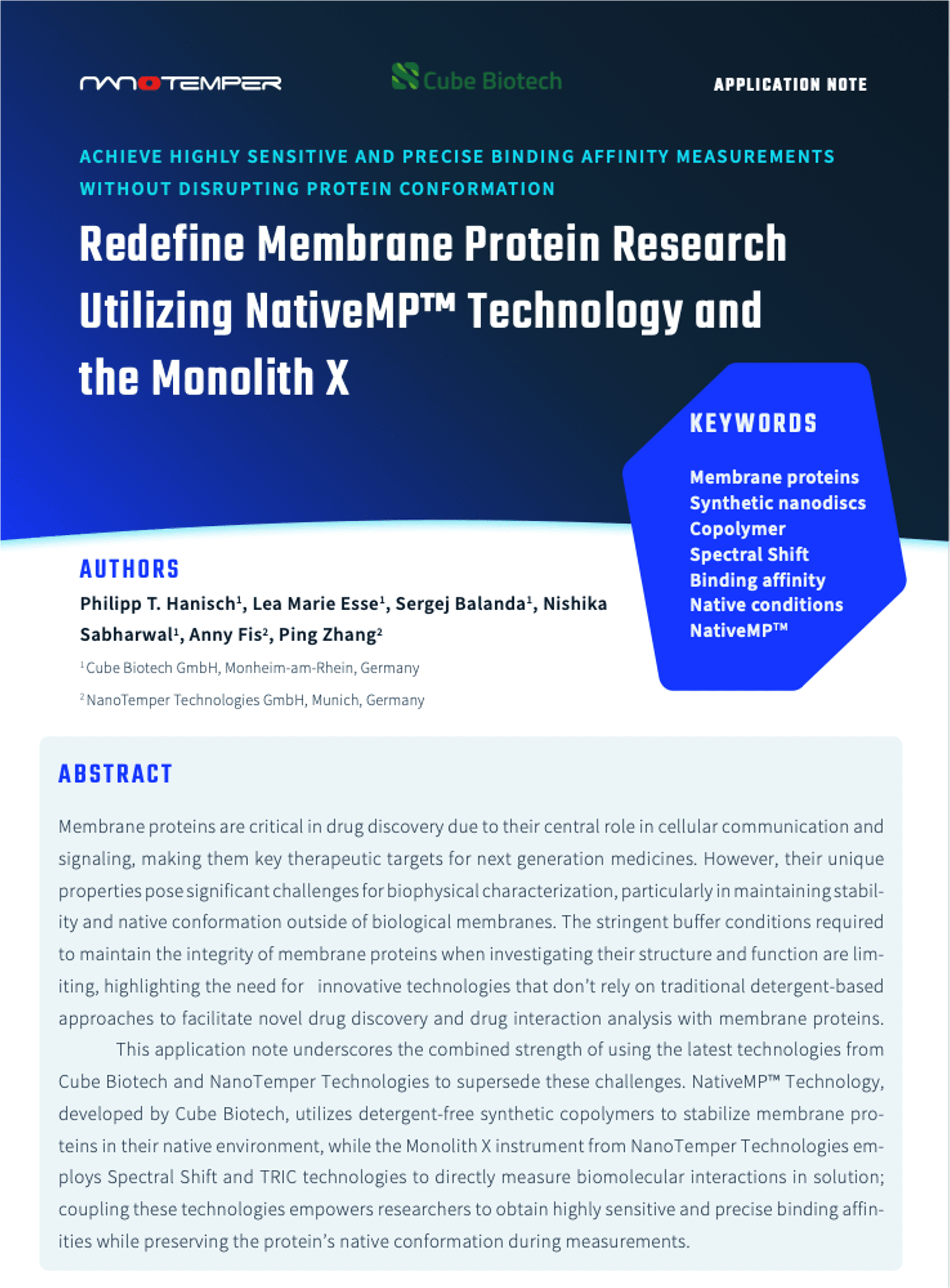
G protein-coupled receptors (GPCRs) are the largest class of targets for drug discovery, and the fourth largest superfamily in the human genome. They have been linked to the regulation of many diverse cellular processes including the onset of many disease states. However, GPCRs have proven to be difficult to study as like other membrane receptors since they are inherently unstable when extracted from their lipid environment. Having a methodology that can screen various buffer compositions as well as monitor the biophysical stability of GPCRs can be a valuable tool to deciphering their function.
nanoDSF, is a label-free version of differential scanning fluorimetry (DSF) that is run on a Prometheus system from NanoTemper Technologies and can measure the thermal stability of GPCRs in the presence of a range of different ligands and buffer systems using microliter amounts of protein.
In this application note, scientists from the Novartis Institutes for Biomedical Research, Basel, Switzerland used nanoDSF to study the stabilizing effects of ligand binding on GPCRs. This technology supports the ability to screen compounds under a variety of different buffer conditions that maintain GPCR stability resulting in more reliable and detailed characterizations of this challenging-to-study class of proteins.
Find out how nanoDSF helped uncover biophysical and structural data of GPCRs.









